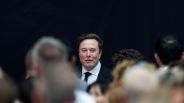If you've been wondering when your refrigerator will start talking to your smartphone and when your tablet will begin chatting with your toaster, a recent study claims they all become one big happy, connected family by around 2025.
The Pew Research Center has released a very detailed overview based on the thoughts of some 1,600 experts on exactly when the Internet of Things (IoT) and wearable tech will begin to have a major impact on the global community, and their conclusion is in just over a decade from now. It will become "like electricity," the report says, less visible but deeply entrenched.
For the less tech savvy, the notion behind the IoT is that all the devices in consumers' lives will not only be connected to the Internet but also to each other. Pew actually defines the Internet of Things in the report as "a global, immersive, invisible, ambient networked computing environment built through the continued proliferation of smart sensors, cameras, software, databases, and massive data centers in a world-spanning information fabric." The report also considers political awareness and the easy spread of information, as well as the potential repercussions of haves and have nots, changes in communication networks and privacy implications.
As various market reports continue to surface for the estimated value of the Internet of Things market in the coming years, one thing is clear -- the market will be massive. Earlier this month Cisco announced that it will deliver some $150 million extra over the next few years in order to better fund early-stage companies within the IoT space.
With regard to the potential enormous size of the IoT market, another report from IB Intelligence claims since the IoT will include such a thick layer of consumer devices constantly communicating with each other, it will account for an increasingly huge number of connections as it evolves.
The IB Intelligence report claims there are already some 1.9 billion devices in place and that number will grow to over 9 billion by 2018. The report adds this number will eclipse the total number of smartphones, smart TVs, tablets, wearable devices and PCs combined.
While the experts involved in the study disagreed about the potential ramifications of the IoT, one conclusion they all agreed on was this:
"By 2025 there will be a global, immersive, invisible, ambient networked computing environment built through the continued proliferation of smart sensors, cameras, software, databases, and massive data centers in a world-spanning information fabric known as the Internet of Things."
ⓒ 2025 TECHTIMES.com All rights reserved. Do not reproduce without permission.




